Who loves cheese? Well I do, that is for sure, and I love making it and sharing it with family and friends.
Having produced cheese as a hobby now almost weekly for more than 3 years, I thought it would be a great time to share with you some tips that I have learnt.
Tip #1 – Cleanliness
Firstly and most importantly is cleanliness. The area that you intend on making your cheese, and your tools that you make your cheese with, must be spotlessly clean and sterilised. I cannot stress this enough. Some people use bleach to clean their surfaces and utensils, but I prefer vinegar and bicarbonate soda, and to boil all the utensils for 15 minutes. It doesn’t take long, and this is one of the first things I teach everyone in my cheese making classes.
I spray all surfaces with white vinegar including the utensils that I can’t boil to sterilise and let them dry naturally. This kills any wild mould spores that can inoculate your cheese unintentionally. I even spray my hands with vinegar and give them a good rub together every time I handle the cheese during the process to alleviate this problem. I have not had a problem with bad mould to date.
Tip #2 – Preparation
Have everything all prepared and laid out before you start. As I am waiting for the 15-20 minutes for the pot, stainless steel utensils and cheese cloths to sterilise, I get a clean tea towel and lay it on the kitchen bench next to the stove top, ready to place all the tools on. I select the recipe well in advance, and get out all the necessary ingredients and put them on the side ready to go. Cheese making requires un-chlorinated water for diluting some ingredients, so I have to pre-boil some rain water from my tank and let it cool to room temperature. You could use bottled water, but I do not due to environmental reasons. I pre mix the diluted calcium chloride with this water, and do the same with the rennet. Something I learnt in the Boy Scouts that I shall never forget and that is the Scouts motto, “Be Prepared”.
Tip #3 – Plan Your Time.
Although the process of cheese making is not particularly difficult, it can be time consuming. Ensure you take into account all factors involved in culturing the milk, renneting, stirring, milling, and pressing. If making a simple hard cheese, allow at least 4-5 hours to entirely finish the process. I make one cheese, Wensleydale, that take over 9 hours from start to the final pressing! Mind you the final product is well worth the effort.
Tip #4 – Start Simply
Start off with a simple cheese to build your confidence.
Try a soft cheese like yoghurt cheese (or Labneh) which is basically putting 1 kg (2 lbs) of natural yoghurt into a cheesecloth and draining for a few hours, then gather into a ball and suspend over a large pot overnight in the fridge. Simple, yet tasty and you can mix in different flavours, either savoury or sweet to liven it up as a dip.
Ricotta is another easy cheese to make. Take 4 litres of milk, bring to about 93C (200F) and add a quarter of a cup (67ml) of white vinegar or lemon juice and stir. You will see the milk separate into curds and whey. Ladle into cheesecloth lined colander to drain. When cool to touch, tie the corners of the cloth into a ball and wrap the ends around a large wooden spoon and drain over a large pot. After a few hours of draining you can add salt to taste and it will keep for about 5 days in the fridge in an airtight container. Great for lasagne and any other dish that requires a large amount of ricotta. As I said, simple successes give you the confidence to try something a little harder next time.
Tip #5 – Attend A Cheese Making Course
If you find that you enjoy making simple and basic cheeses, see if you can find a local cheese making course that is held nearby. The knowledge that you will learn will take you to the next level, and as I found, the interaction with other amateur cheese makers is priceless. Some of the courses can be expensive, but I found a relatively cheap one that was definitely worth the money. I have attended two of these courses (basic and mould) at our local community centre. Have a look around your local area. You might just get a surprise.
Tip #6 – Try Something Harder
When taking the next step and you have the urge to make an intermediate skill level cheese, like cheddar, feta, parmesan, edam or the like, try and make one like feta or Caerphilly that only take a short time to ripen so that you can taste your handy work quickly. By making these quick to ripen cheeses once a month, you will always have some type of cheese at hand at home and never be tempted to by that processed store bought rubbish that some supermarkets try and pass off as cheese!
Tip #7 – Don’t Be Afraid To Experiment
Once you get the basics right fairly consistently, don’t be afraid to experiment a little by adding other flavours to your cheeses during pressing or milling. I add a layer of home grown sage leaves into the middle of my Wensleydale and it imparts a fantastic flavour. I add home grown dried Birdseye chilli to my Monterey Jack to produce a variety called Pepper Jack. I have even added green peppercorns to my Farmhouse cheddar. It is all about the cheese and the final flavour.
Tip #8 – Have Patience.
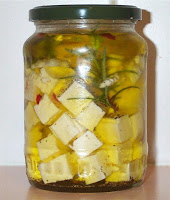 A good cheese, like a good wine, needs to ripen for a specific period of time and get better with age. Try and resist temptation by eating your cheese earlier than recommended. All hard cheeses take time to mature to the right taste. You would be amazed by the difference a week or month between tastings. Depending on the cheese, if tasted early it will be very mild, but if left for longer the flavour gets stronger over time. I will give you an example. I made some Camembert, tried it at 3 weeks and it was fantastic. Left one for 4 weeks, and it was so strong it was overpowering but out of this world. Another example, my first Caerphilly cheese I sampled at 15 days, when it was supposed to ripen to 28 days. It was nice, but when we tried it at 28 days, it was fantastic. I don’t dare try my Parmesan until at least 12 months!
A good cheese, like a good wine, needs to ripen for a specific period of time and get better with age. Try and resist temptation by eating your cheese earlier than recommended. All hard cheeses take time to mature to the right taste. You would be amazed by the difference a week or month between tastings. Depending on the cheese, if tasted early it will be very mild, but if left for longer the flavour gets stronger over time. I will give you an example. I made some Camembert, tried it at 3 weeks and it was fantastic. Left one for 4 weeks, and it was so strong it was overpowering but out of this world. Another example, my first Caerphilly cheese I sampled at 15 days, when it was supposed to ripen to 28 days. It was nice, but when we tried it at 28 days, it was fantastic. I don’t dare try my Parmesan until at least 12 months!Tip #9 – Invest In Good Equipment
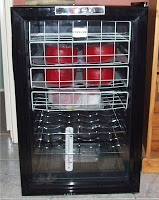 If you find that cheese making is the hobby for you, invest in a few good books, a decent press, and if you don’t have a cellar that maintains a constant temperature between 10-15 C, then you will need to invest in a wine fridge that has the same temperature range. After I decided that cheese making was going to be a long term hobby, then I took this step and invested in such a fridge and it has become my “cheese cave”. The summers can be pretty gruesome where I live, so it was a need more than a want if I was to continue to make cheese during this hot season. I picked it up relatively cheaply, and it has served me well so far. I can now make un-waxed cheeses as well as mould type cheeses (blue vein, brie, camembert) because I can keep the temperature constant.
If you find that cheese making is the hobby for you, invest in a few good books, a decent press, and if you don’t have a cellar that maintains a constant temperature between 10-15 C, then you will need to invest in a wine fridge that has the same temperature range. After I decided that cheese making was going to be a long term hobby, then I took this step and invested in such a fridge and it has become my “cheese cave”. The summers can be pretty gruesome where I live, so it was a need more than a want if I was to continue to make cheese during this hot season. I picked it up relatively cheaply, and it has served me well so far. I can now make un-waxed cheeses as well as mould type cheeses (blue vein, brie, camembert) because I can keep the temperature constant.Tip #10 – Share Your Success.
Don’t forget to have fun and share the final product. I usually make my cheese on a Friday night, with a few glasses of wine to relax after a tough week at the office. I find it very therapeutic. I also enjoy breaking out a small cheese platter when friends drop by whereby sharing all the different tastes. Most say I should sell it at a local farmers market, but I think it would spoil the fun of the hobby. Some of my friends have never heard of most of the cheese types that I make, because the main cheese consumed in Australia is cheddar or processed cheese slices. I love the variety that home make cheese making gives you.
Summary
Who would believe that you can make so many different types of cheese with plain old milk! After all it is milks immortal leap.
Cheese making is great fun, so give it a go, and remember the most important rule. Don’t cry over spilt milk :-).
Cheese making is great fun, so give it a go, and remember the most important rule. Don’t cry over spilt milk :-).
For more cheese making tips, check out my cheese making blog, The Little Green Cheese. It is full of easy to follow recipes, video tutorials and helpful advice, all for free!
Don’t just take my work for it. Lets hear from the audience! For all those readers who have tried my cheese, or who have made cheese during one of my classes, sound in with a comment to let everyone know how tasty, or how much fun it is to make and eat home made cheese.

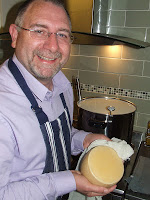
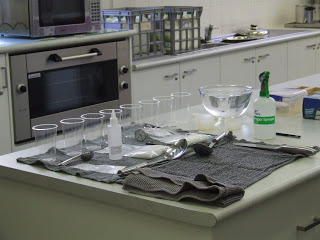
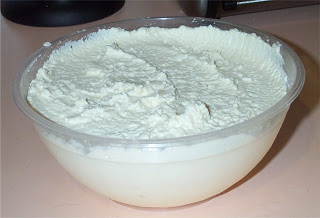
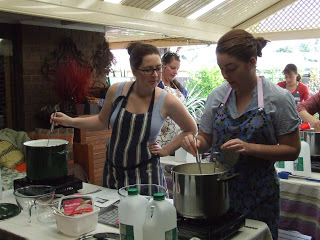
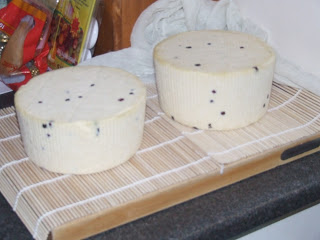
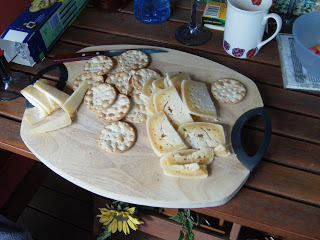
I will definitely be trying this at home soon. Think I’ll start with the ricotta, but will have to try my hand at Caerphilly (given its my home town)
Caerphilly is a fantastic cheese, and one of my favourites. Love making Anglesea Eggs with it!
I think you make the best cheese ever Dad, I would like my own cheese fridge in my room stacked with all the cheese you make!!! Love Ben W
Thanks for the comment Son. I know you like my cheese. I can’t make it fast enough for your ravenous appetite.
I did a one-day workshop at Red Hill with some friends about ten years ago, which was great fun. We made Camembert and ricotta. I was working in a lab at the time and used one of the constant temperature cabinets to mature my cheese (no nasty chemicals or biohazards had been in there).
The workshop was great. Seeing something demonstrated and then doing it yourself with expert feedback and advice is really helpful and very confidence building. I have continued to make cheese, although not as often as I would like.
The lady running the cheese course all those years ago mentioned that a lot of people are put off eating cheese because of the scare-mongering around consumption of fat. Her take was that eating (real) cheese as part of a balanced diet was not a risk for weight gain, in fact quite the opposite.
And interestingly enough just the other day I read about a recently published peer-reviewed study that found that consuming whole milk products was *not* associated with weight gain or increased risk of heart disease, stroke or type 2 diabetes. ; ) Clearly the cheesemakers were way ahead of the health police on that one.
For people wanting to have a go, one thing you do need for cheesemaking is good quality unhomogenised milk. In the past getting it was a bit of a hassle. Some supermarkets stock the Parmalat product, but only the 1L size is unhomogenised. However, these days milk is available at a lot of Farmers markets – even raw milk, if you want it. I get mine at The Collingwood Children’s Farm farmers market and the Slow Food Market at the Abbotsford Convent, and I know there is sometimes milk for sale at the Flemington weekly farmer’s market, but possibly not every Sunday.
Cheers Tracey. Thanks for the tips on where to get the best milk around the city. I will have to take a visit.
I was inspired to make mozzarella after I read about veggiegobbler and your session a while back. I followed your 30min mozzarella youtube link and sadly ended up with ricotta. But I decided to give it another go and second time round I had delicious mozzarella! I’ve since had a go at halloumi which turned out great. As you say, its all about giving it a go!!
Well done Bek. I am glad you tried again. It tastes great melted on just about everything.
Hi Gavin
How about your next e-book being on cheese-making and perhaps you could include all your excellent tutorial videos as part of the book, or at least a hyperlink to the videos. Can you actually hyperlink from an e-book, I wonder?
David
Hi Gavin,
Is it called Cabra al Vino aka Murcia al Vino?
I found one similar in a book by Jean Mansfield. If it is it will look amazing. Don’t know about the taste as never tasted one.
Good luck with it but doubt you need luck making cheese these days.
Regards
Jo in NZ
When is your next cheese making class Gav?
I am totally hooked on cheese making. My husband calls me a cheese nerd-I don’t care:)
I have always liked food and science, so what better way to combine them! Just beware, if you start, you may just get sucked in and can never stop!
I enjoy cheese making to know that yah, I made that! I enjoy my cheese more and eat it much slower, after all, waiting at least 3 months for it to be ready deserves a slow eat. I broke into my plain gouda and my blue gouda recently and they were both amazing! I am making another blue as I speak.
I appreciate all your tips and very much enjoy seeing your adventures in cheese and life as well.
Thank you!
Kenzie
Hello
I am about to try a mold cheese, your video looks good. I was wondering how easy it is to keep the milk and starter then curds at a constant temperature. Should I invest in a mat from a brewer shop or a small fish tank heater (and warm bain marie style rather than stove top in a double boiler
)? Interested in your view.
Hi Irene. To save all the expense, and if you have a large sink in the kitchen, just put the pot into the sink and then fill the surrounds with hot water. This will heat up the milk, and when you reach the right temperature, drain the water.
Gav